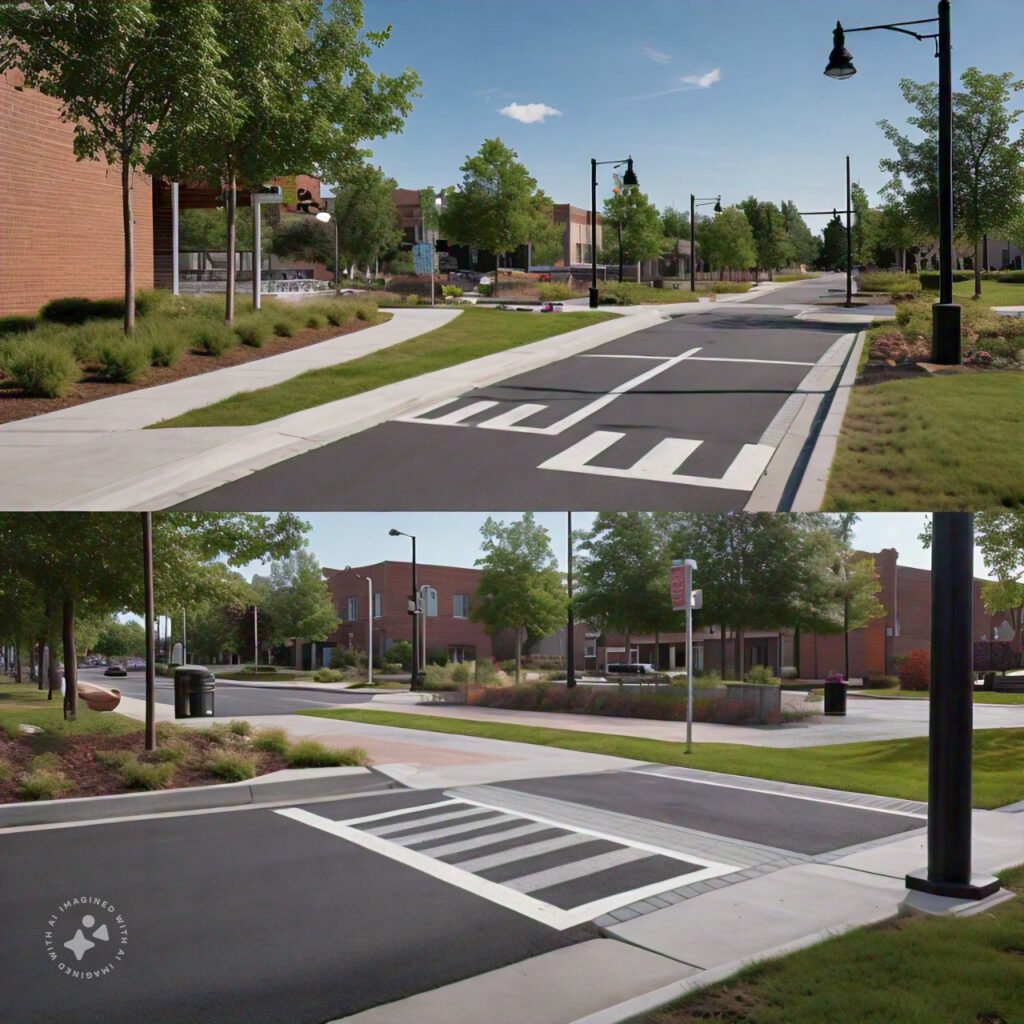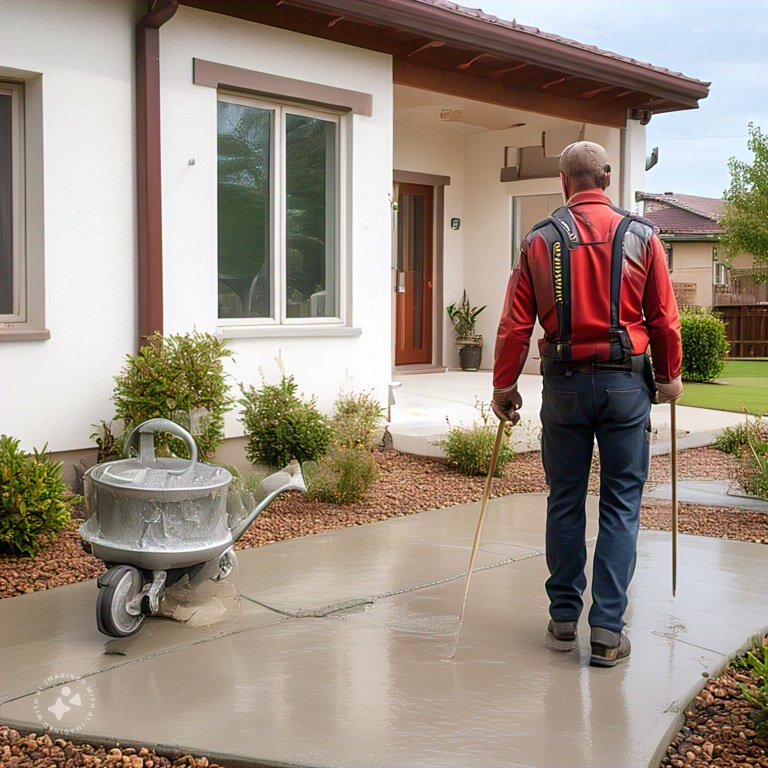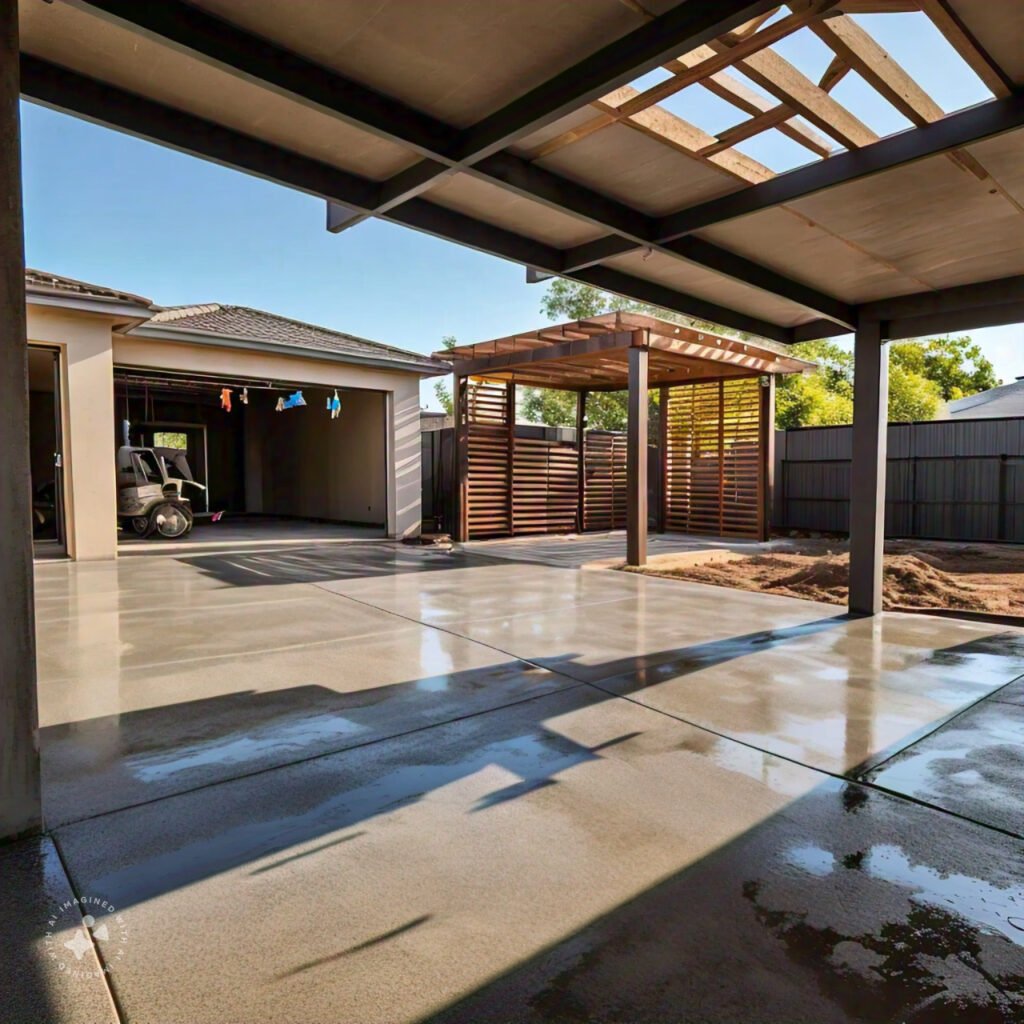Sidewalk Design
Building accessible infrastructure is a legal and moral obligation in modern cities like Houston. ADA (Americans with Disabilities Act) compliance ensures that sidewalks and public spaces are accessible to everyone, including people with disabilities. Failing to meet ADA standards can result in costly legal issues, and more importantly, it can exclude a significant portion of the population from accessing public spaces. In this article, we will discuss how to ensure that your sidewalk designs meet ADA compliance, from curb ramps to slopes and dimensions.
What is it, why it matters to Cross Construction Services
1. What is ADA Compliance?
The ADA sets standards for the design of accessible public spaces, ensuring that individuals with disabilities have equal access. In terms of sidewalks, this includes specific guidelines for curb ramps, slopes, and surface textures.
2. Key ADA Requirements for Sidewalks
- Curb Ramps: All intersections and pedestrian crossings must include curb ramps that provide smooth access for wheelchairs. These ramps must not exceed a slope of 1:12.
- Sidewalk Slope: The running slope of the sidewalk must not exceed 1:20, and cross slopes should not exceed 1:48. These specifications ensure that sidewalks are accessible and safe for individuals with mobility devices.
- Clear Width: ADA requires a minimum width of 36 inches for sidewalks, but to accommodate wheelchairs and allow for passing, a width of 5 feet is preferred. This allows for safer and more convenient navigation.
3. Best Practices for ADA-Compliant Sidewalk Construction
- Non-Slip Surfaces: Ensure that the sidewalk surface is slip-resistant to prevent accidents, especially in wet conditions. Textured surfaces are particularly beneficial.
- Tactile Warnings: Use tactile paving at curb ramps and crossings to warn visually impaired pedestrians of changes in the path or the presence of a roadway.
- Maintaining Proper Grade: Avoid steep slopes, and ensure that landings are installed in areas where the sidewalk grade changes significantly. This helps maintain the usability of the sidewalk for all pedestrians.
4. Frequently Asked Questions About ADA Compliance
- What happens if a sidewalk is not ADA compliant? Non-compliant sidewalks can lead to legal action, costly retrofitting, and potentially fines. More importantly, they hinder accessibility for individuals with disabilities.
- Can existing sidewalks be modified for ADA compliance? Yes, many sidewalks can be retrofitted to meet ADA standards, such as adding curb ramps, adjusting slopes, or widening paths.
Concrete Solutions
Ensuring ADA compliance in sidewalk design is not just about following the law—it’s about creating inclusive, accessible public spaces for everyone. By incorporating these best practices, you can ensure that your sidewalks are safe, usable, and compliant with ADA standards, ultimately contributing to a more accessible city.


